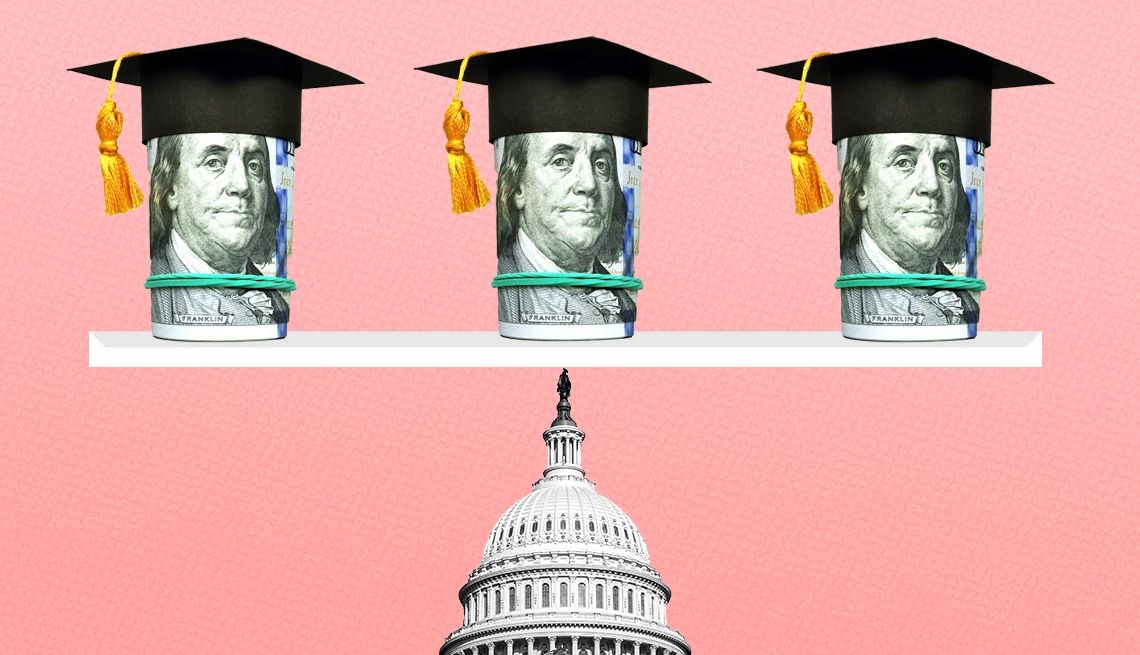AARP Hearing Center


If you completed a college degree at some point, congratulations. But you could have one more challenge if you took out student loans to get that degree. There’s an important deadline on April 30, and if you don’t act before then, you may lose out on lower loan payments — and, possibly, loan forgiveness. Here is what to know.
The Saving on a Valuable Education (SAVE) program should be of special interest to those who borrowed less than $12,000 for their education. “It doesn’t matter what your total debt is right now,” says Natalia Abrams, president and founder of the Student Debt Crisis Center. “If you originally borrowed $12,000 or less, have been in income-based repayment for 10 or more years, and have signed up for the SAVE program, all of your debt could be erased starting right now.”
Most student loans can be consolidated into the SAVE program, which replaces the earlier Revised Pay as You Earn (REPAYE) plan. Borrowers on the REPAYE plan automatically get enrolled in the new SAVE plan.
SAVE is an income-driven repayment plan. That means your payments depend on your discretionary income, which is the difference between your annual income and 225 percent of the poverty guideline. For people living in the 48 contiguous states, the poverty line for a single person is $15,060, and 225 percent of that is $33,885.
You subtract the amount that’s 225 percent of the federal poverty level from your adjusted gross income, which is your gross income minus certain above-the-line deductions, such as contributions to retirement plans or health savings accounts. The remaining amount is the income subject to the SAVE program’s payment plan.
Let’s say there are two people in your family, and you’re paying 6.5 percent interest on your loan for undergraduate school. Your discretionary income is $15,630. Under current law, you’d owe 10 percent of $15,630 each year, or $1,563, and your monthly payment would be $130. Under the new SAVE rules, you’d owe 5 percent of your discretionary income, meaning your payment would fall by half, to $65 a month.
The SAVE program has two other benefits for borrowers. The first is that the government would subsidize any interest owed beyond the payment. This would prevent the loan balance from increasing during the repayment period.
The SAVE program allows borrowers with several different loans to consolidate them into one larger loan, typically with a lower payment than your existing loans. Under SAVE, borrowers can start their repayment clock from the date of their first payment. Depending on the type of loan you have (and your current job), your loan could be repaid or forgiven much more rapidly than under previous rules.
The catch to it all: You must apply to the SAVE program by April 30. If you do, you will get a one-time payment adjustment in July.
Other options
You may have other options for reducing or eliminating your student loans. But don’t count on sweeping loan forgiveness. The general sense from student loan experts is that while the process is ongoing, you probably shouldn’t be counting it. “I’m often asked if there will be another full-scale attempt at student loan forgiveness,” says Stacey MacPhetres, senior director of education finance at Bright Horizons. “It doesn’t feel super likely.” Still, you may have other options that are worth exploring.































































More From AARP
Don’t Trip These IRS Audit Triggers
Little mistakes can lead to long refund delays
AARP Property Tax Aide Helps Fight Rising Taxes
More than 9 million taxpayers likely qualify for relief
Investment Clubs See Surge of Interest
Make friends and money at the same time with investment clubs
Recommended for You